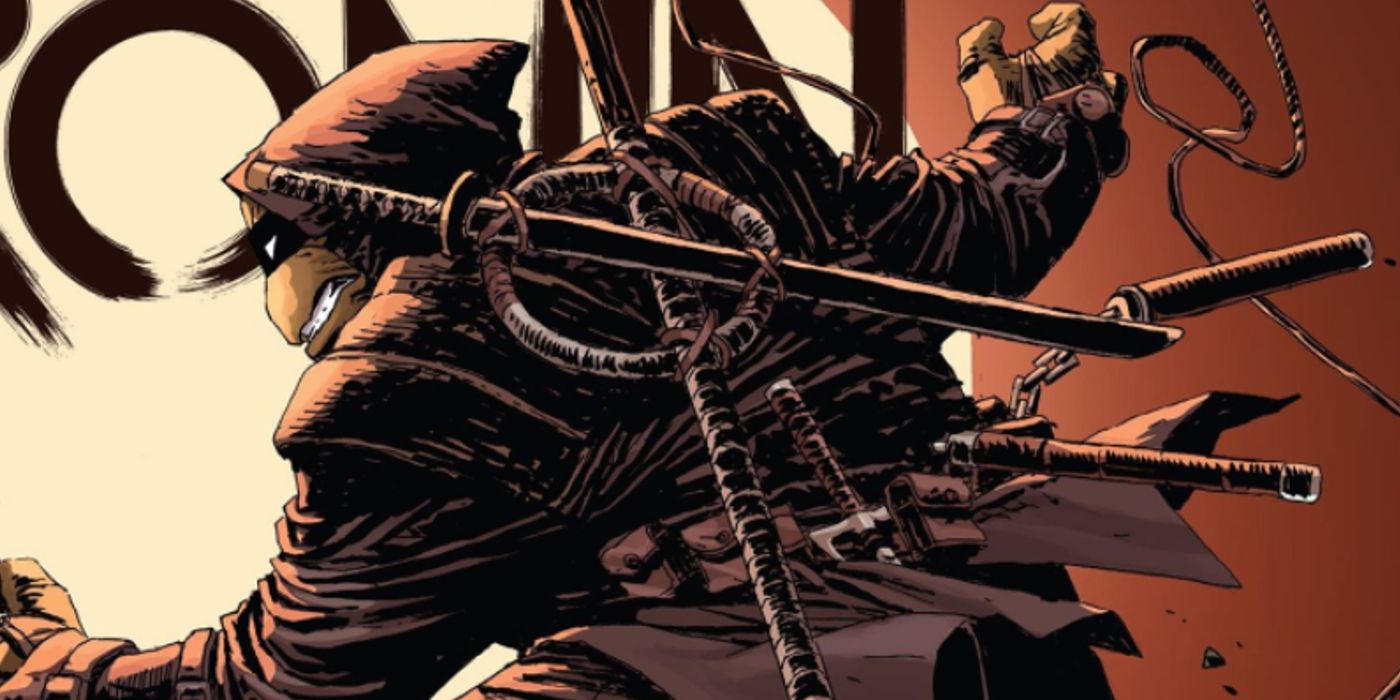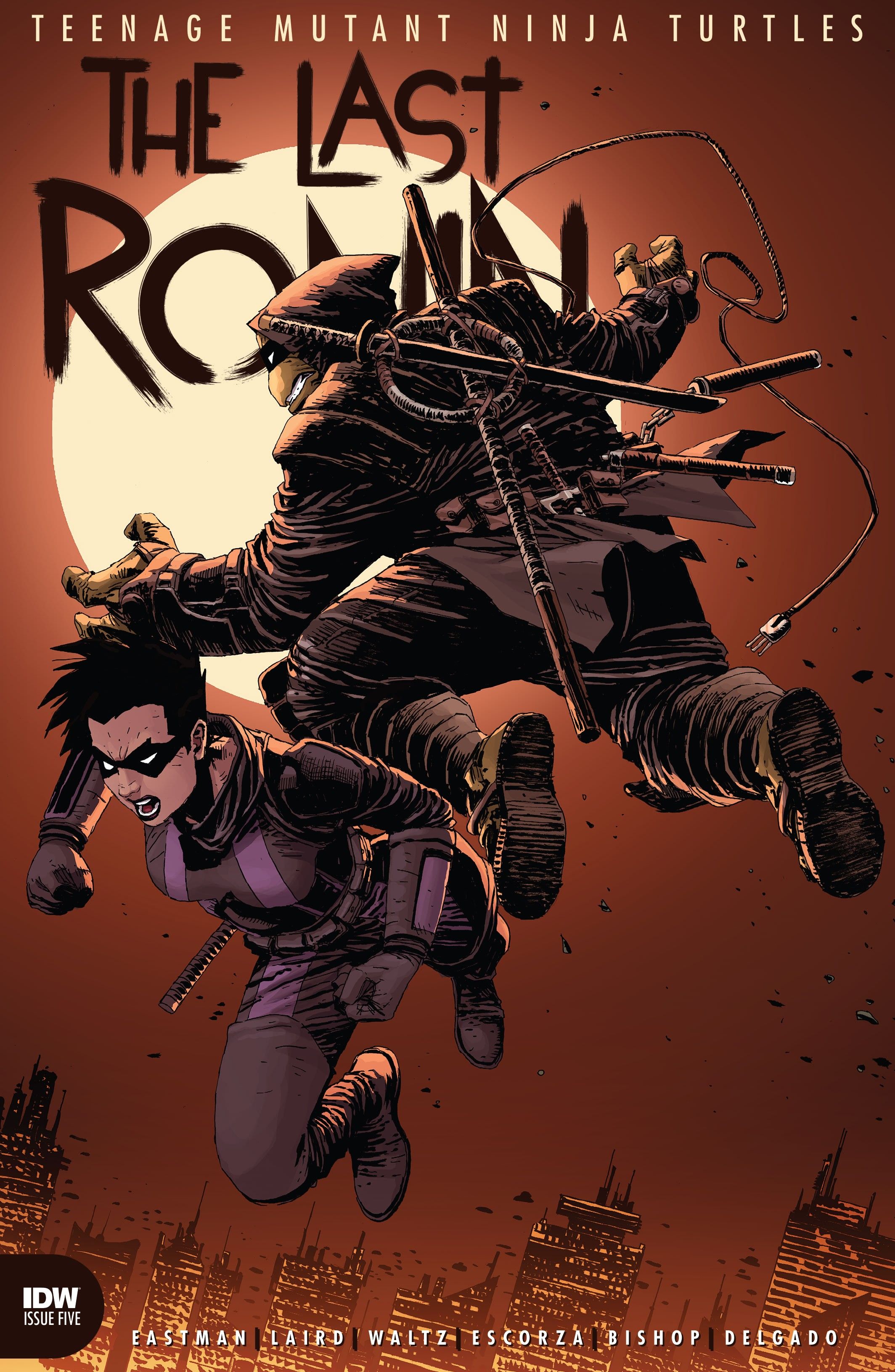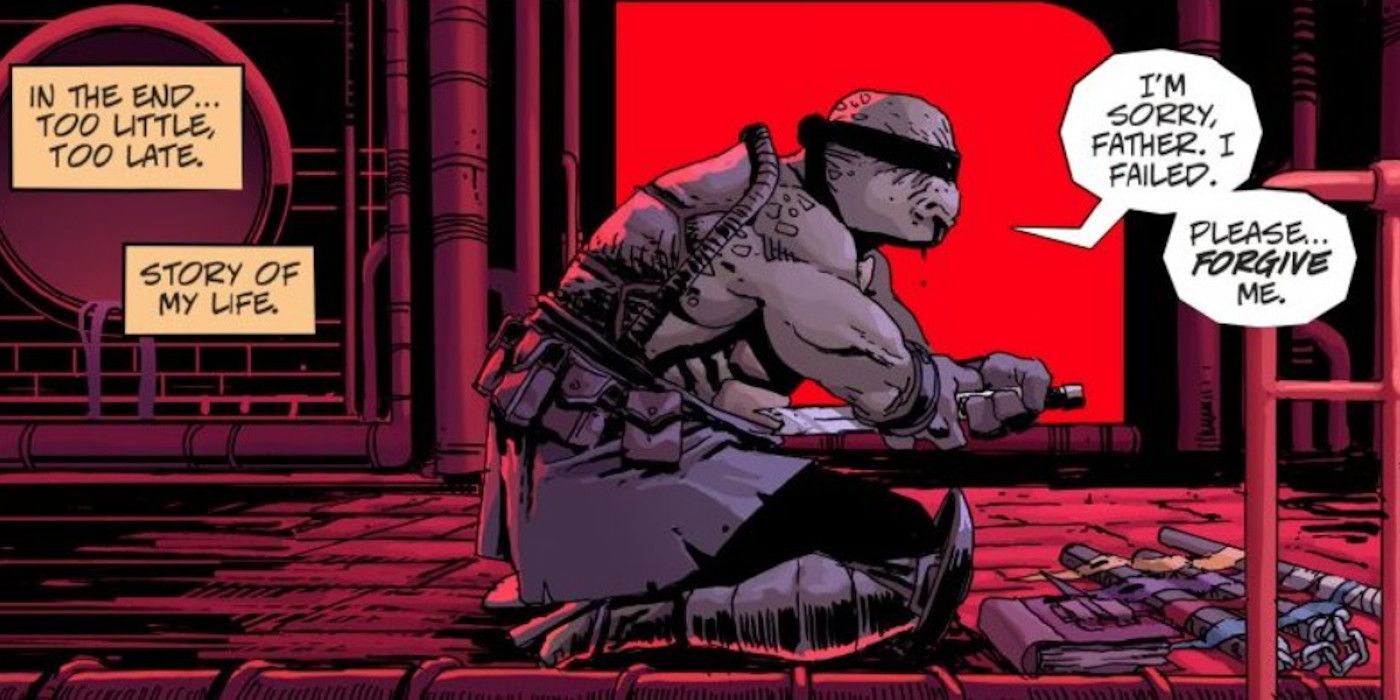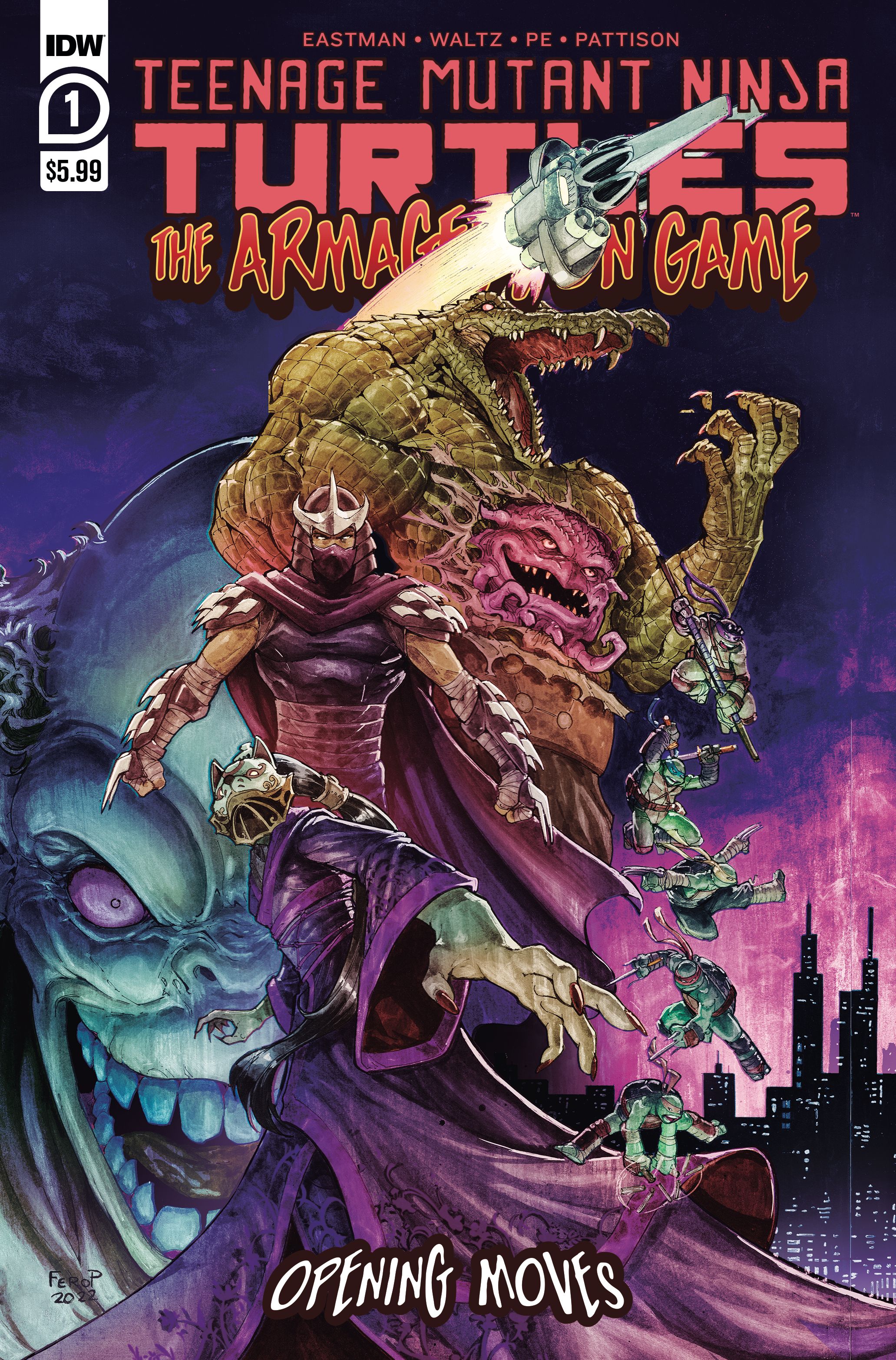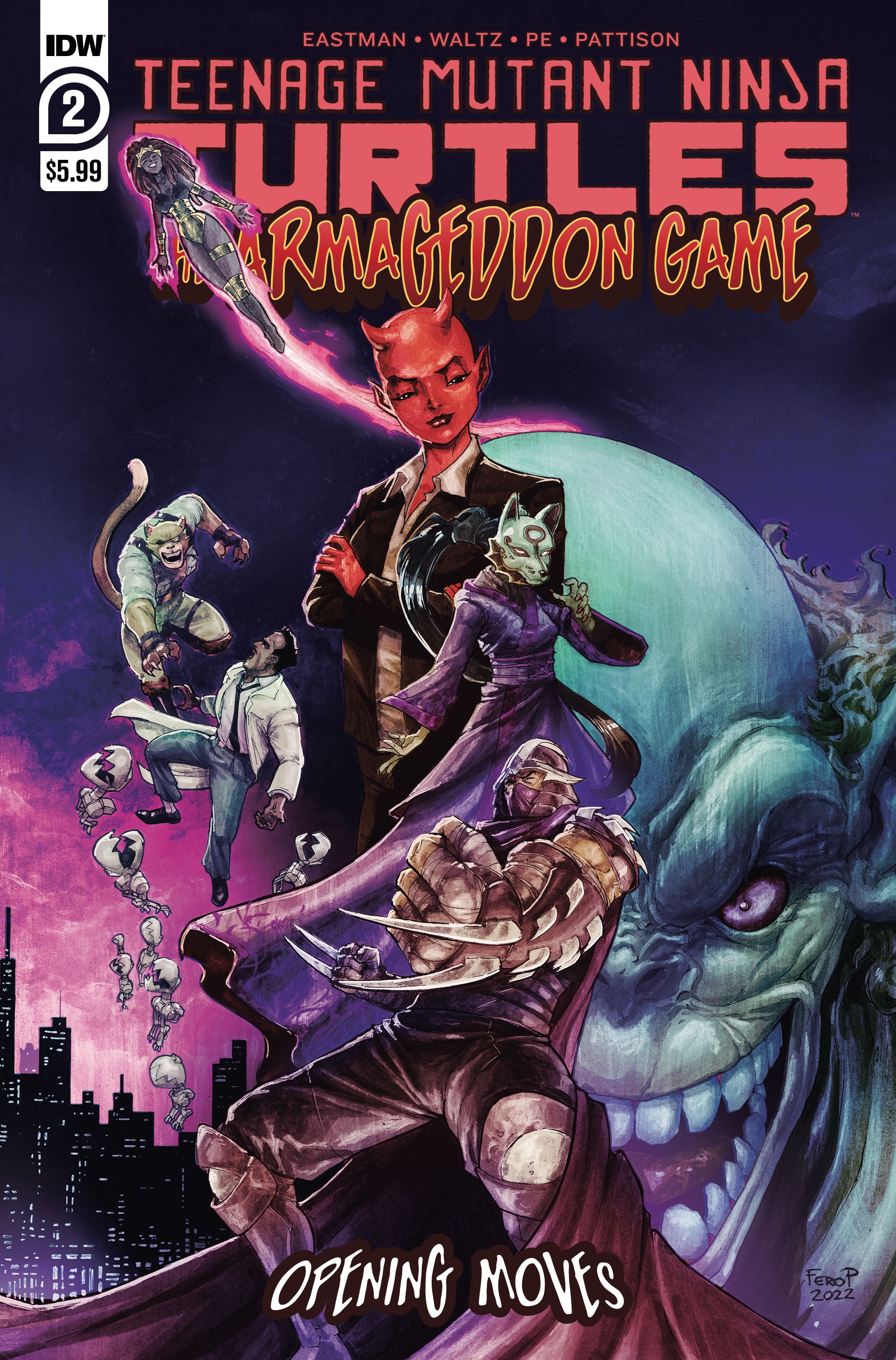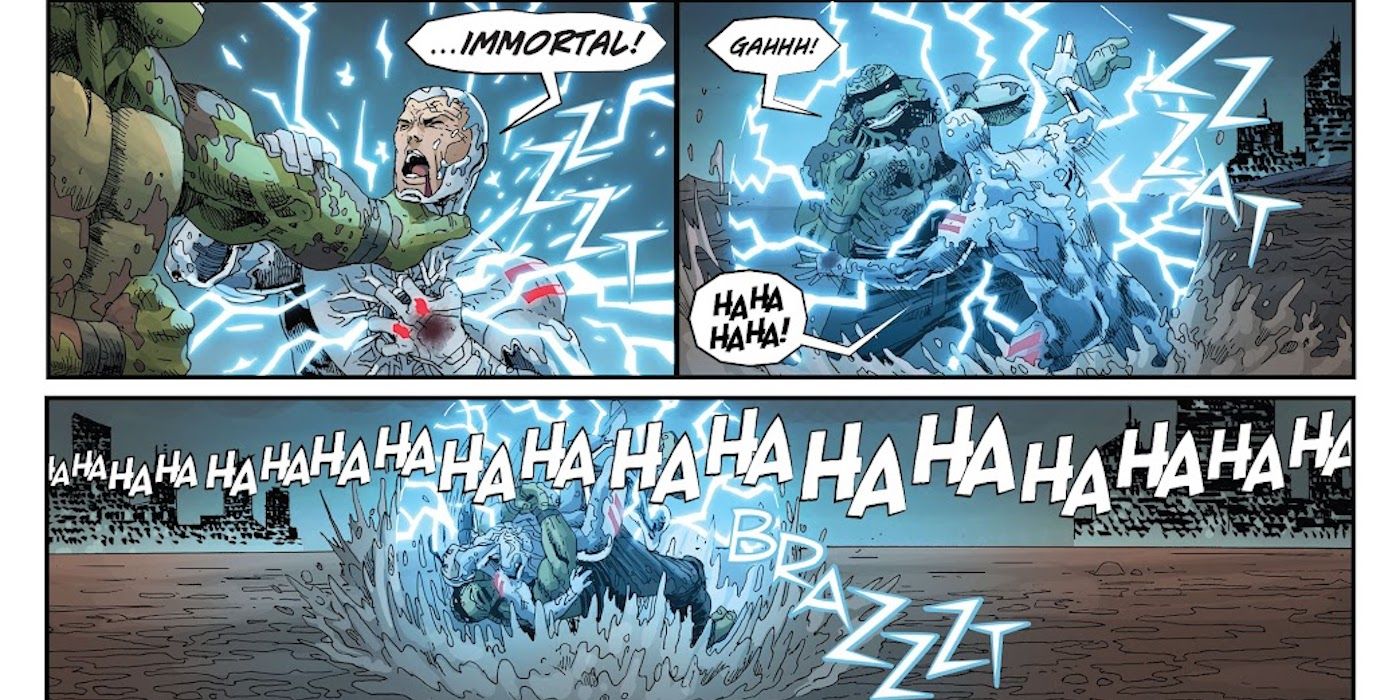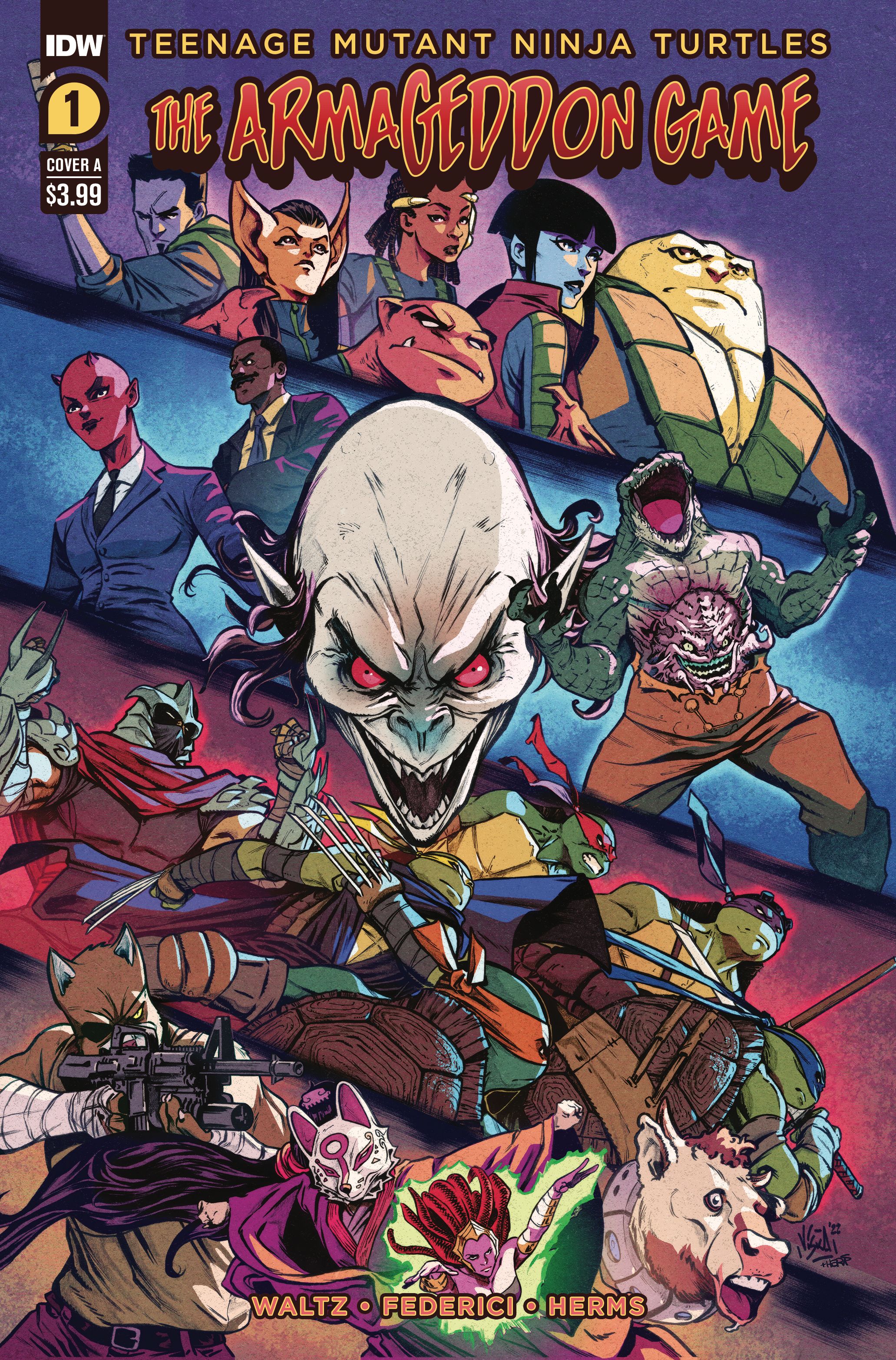After helping relaunch the franchise as a comic book powerhouse when IDW Publishing first launched their Teenage Mutant Ninja Turtles ongoing series in 2012, writer Tom Waltz stepped aside as the lead writer after 100 issues. But Waltz wasn't done with the turtles yet. He teamed up with Turtles co-creator Kevin Eastman to help tell a story decades in the making. Based on an original concept by Eastman and TMNT co-creator Peter Laird, The Last Ronin is a dark vision of the future where only one of the Ninja Turtles is left standing. This loving homage to Frank Miller's The Dark Knight Returns follows the Last Ronin on his grim quest for revenge.
Now that the fan-favorite series has come to an end, CBR spoke with Waltz to look back on The Last Ronin. Waltz also provided some insight into his return to the main IDW Ninja Turtles continuity and the upcoming epic Armageddon Game, which looks to explore plot threads that he has been weaving since the IDW series began.
CBR: The Last Ronin came from a kind of "lost" story outline that Kevin Eastman worked on along with TMNT co-creator Peter Laird. Now that the series has wrapped, can you share a bit about what you kept or what changed from that initial outline? How much of the story you told is in that original document?
Tom Waltz: Honestly, it’s probably fair to say we kept as much as we changed. The overall core of the story -- a future TMNT tale with one remaining brother seeking vengeance for his family -- never changed, but many specifics did, either out of necessity (the outline was written in 1987, so what was futuristic then is commonplace now) or during the creative process, which was very fluid between Kevin and me from the start. We’d get new ideas or new takes on some of the existing ideas, and things would evolve from there. But there’s no The Last Ronin without that initial outline, and there’s no initial outline without Peter Laird. Peter may not have been actively involved in the production of this book, but his creative influence always resonated loud and clear as we worked and wrote.
Esau and Isaac Escorza are the primary artists for this series. But, Andy Kuhn was originally slated to provide the art. How did this team change your approach? What did their art bring to this series?
You know, that’s a great question. As plotters and writers, I’m not sure if Kevin or I ever consciously thought about shifting our approach based on the change from Andy Kuhn to the Escorza Brothers. But thinking back on it now, there must have been some moments where I considered their style and plotted accordingly, as I’m sure I did for Andy as well.
I think the real change may have come for Kevin, who was doubling up as both the layout artist on all the pages and the main artist on some pages. Ironically, he didn’t have to change up his art approach so much as his descriptive approach to his layouts. English is not the brothers’ first language, so Kevin was careful to keep his notes clear and concise and as slang free as possible to not create any undue confusion. But ultimately, language differences aside, we all found a very comfortable working routine from idea to plot to art to script to print… despite what the publishing delays might suggest to the contrary [laughs].
Your time on the main ongoing Teenage Mutant Ninja Turtles series emphasized the brotherhood and familial relationship between the turtles and Splinter and their extended self-made family. What was it like to write a Turtles story where that family was physically gone?
When we first started, there were no "ghost brothers” talking to Michelangelo. But as Kevin and I began plotting in earnest, it really struck me that a TMNT story just feels wrong without the banter -- both loving and bickering -- between the four brothers. So, full disclosure: I totally stole this idea from the amazing Brian Ruckley, who has been writing IDW’s top-notch Transformers comic for the last three years and did something similar with the character Cyclonus in the series. I pitched the idea to Kevin about having the brothers "speaking” to Mikey -- either as ghosts or figments of his imagination… or, worse, remnants of his grief and survivor’s guilt. And Kevin really dug the idea.
We then had to decide how to depict it, and we concluded that we should see the brothers as Mikey sees them, both in life and death, which is where the great Ben Bishop comes in. And once we came to the decision to include them, the storytelling became a bit more natural because, despite the tonal changes, etc., it felt like a TMNT story, which, when done right, is about family.
The reveal of which turtle was actually The Last Ronin was a significant part of the first two issues of the series. I’m wondering if you can elaborate on what you think Michelangelo being the last survivor allowed you to explore thematically that you couldn’t with the other turtles? Why Mikey and not, say, Donatello?
The simplest answer is that Mikey was the brother we figured nobody would expect the happy-go-lucky party dude is now Rambo? What?! Raph seemed too obvious, Leo wasn’t too far behind on the obvious scale, and Donnie seemed like someone who would’ve gone more tech than conventional in his revenge, and we really wanted this to be a grunt’s story. Besides, we already had plans for April to handle a lot of the technological aspects of the Resistance, which freed up a warrior turtle to do the wet work. Plus, Kevin really liked the idea that Mikey, who was the first TMNT ever drawn, was also the last to be alive. Thematically, Mikey gave us the opportunity to explore the irony of the one person in the family who never truly bought into the clan-war aspect that exists at the foundation of their lives -- being the only one left alive and stuck with the mission of ultimately winning said war… or dying trying.
Your villain wasn't the Shredder but a new, younger descendent, Oroku Hiroto. Why introduce someone new for Michelangelo’s final battle?
Hiroto was Kevin’s idea all the way. He wanted a new Foot Clan master in charge as it only made sense after so many years. And he wanted to design some super-cool new armor for him. It couldn’t be Shredder because we were initially leaning into the Mirage timeline, where Shredder would be long dead. So, Kevin suggested Hiroto as a descendent of Shredder and the new main baddie, and it was me who really derailed things when I said, "Hey, what if we call him Oroku Hiroto, and he’s Karai’s son, and Karai is Shredder’s daughter… and Splinter is a member of the rival Hamato Clan?” It went against the Mirage timeline (Karai is not Shredder’s daughter in that canon… and I don’t believe there is a Hamato Clan either), but my suggestion seemed to take root as soon as it was out of my mouth.
Kevin and I discussed it further, and it became quickly apparent that going this route would allow us to dig deeper into the whole "family feud” aspect of the story, replacing Hatfields and McCoys with Orokus and Hamatos. It was a big change, but still, something that felt easily accessible for most casual fans to grasp, which really was our goal from the onset -- to tell a story similar to, and inspired by, The Dark Knight Returns, creating characters and settings that feel both new and familiar all at once. An evergreen story.
The story ends with a decidedly bitter-sweet moment when Mikey fulfills his life’s mission and ends his family’s decades-long vendetta against the Foot clan at the cost of his own life. The first issue ended with him attempting and failing to commit ritual suicide. Can you tell us a bit about the character’s emotional journey between these dramatic moments?
The seppuku scene in Issue #1 was something I brought to the table, not gonna lie. It came nearly fully written and rendered in my head as soon as Kevin started talking to me about Mikey falling from the tower and crawling wounded into the sewer. We made a lot of changes on the fly during the creation of The Last Ronin, but I can honestly say that the ritual suicide scene never varied from its inception to its final depiction, and I can’t praise Kevin, the Escorzas, and our uber-talented colorist Luis Antonio Delgado enough for the rendering they provided.
For me, the moment where Mikey fails in Issue #1 and prepares to kill himself was representative of his mission -- he was going to end things his way, one way or another. And in Isue #5 he finally fulfills that mission, as he takes on the Foot Clan and Hiroto by himself, following through on his declaration at the end of Issue #4 that he wasn’t going to let anyone else he cared for pay the price for his family’s vendetta. So in a way, his entire mission is a kind of ritual suicide, or a "one-way ticket” as he calls it… an honorable death on his own terms. It’s a bittersweet ending, no doubt about it, but you can’t help but feel like it’s a happy one for Mikey, as he defeats his archenemy, avenges his family, and does so without any undue collateral damage to those he loves who are still among the living.
The final issue ends with an Epilogue and a "To Be Continued…” Are there plans for a sequel that explores this world further? Is that last image setting up an attempt to make new mutants or to literally bring back the original turtles?
Oh… standby, sports fans. I can’t give specifics yet, but suffice to say, we are not done with what we are now lovingly calling "The Ronin-verse." Big announcements coming soon!
You stepped away from the main series for a few years but are returning to that continuity with the upcoming Armageddon Game storyline that has been developing in the background since just about the beginning of the IDW series’ launch. Why is now the right time to finally bring that to fruition?
It really felt like the current ongoing run by Sophie Campbell had reached a point story-wise where we could bring back the big dangling plot points we left hanging at the end of Issue #100, which was my last issue as the ongoing writer. When I stepped away, former editor Bobby Curnow gave Sophie the mission of slowing things down a bit, focusing on the aftermath of Splinter’s death and how that would affect the TMNT, both individually and collectively. Plus, Sophie had an entire Mutant Town to develop, which meant some time was needed to focus on new characters and new realities. And she did this magnificently! So, with the new status quo firmly in place, it felt like a good time to revisit some of the bigger picture stuff we hinted at when #100 ended -- in particular, the fate of LeatherKrang, the next moves for the enigmatic Pantheon family of immortals, and the redemptive arc of Oroku Saki (né The Shredder), who has been given another chance at life through Splinter’s sacrifice.
Bobby had approached me about coming back as the ongoing writer to tell this tale. We thought we might lose Sophie as she had other creative commitments that were requiring more of her attention, but that seemed kind of, in the immortal words of Harold Lilja, "meh” to me. Not for me personally -- I LOVE writing the TMNT -- but more "meh” for fans. It would just be the old guy coming back, and I felt like it should, I dunno, feel bigger than that.
At the time Bobby approached me, I was reading Scott Snyder and Greg Capullo’s Dark Knights: Metal event, and I remembered that Snyder (whom I’m a HUGE fan of… Capullo, too!) wrote in the intro to the trade collection that he was approached to do an event for DC as part of his return after being away for a bit following his long and celebrated Batman run, and that he found the prospect both daunting and exciting. Well, reading that made me start thinking about telling The Armageddon Game story as an event… and I, too, found the idea to be both daunting and exciting… and too hard to resist.
So, I pitched a broad-stroke concept to Bobby and Sophie, and they liked it a lot… enough to have it greenlit by IDW and Nickelodeon, and even more importantly, for Sophie to re-enlist as the ongoing writer in order to help me see it to fruition… as well as use it to set the table for her own future TMNT tales. Win-win!
Do any of the massive changes Sophie Campbell has made to the universe figure into how you approached this story versus how it might have been told, say, in Issue #101?
Oh, yeah -- very much so! The truth is, I love working in comics (the same way I loved playing sports when I was younger and then serving in the Marines later in my life) because it is 100% a team/collaborative gig. TMNT: The Armageddon Game may have initially percolated in my head, but that was just where things got started. When it’s all said and done, this event is going to be the result of a combined effort of many creators and inspirations, past and present. I always say that I know I have some good ideas, but by no means do I have ALL the good ideas, and I thrive best when I’m working with a motivated group of talented people who are bouncing all kinds of crazy ideas off each other to see what resonates and what doesn’t.
This event is my baby, sure, but I’m more than happy to share the baby with amazing folks like Sophie Campbell, Charles Beacham, Erik Burnham, Jeff Whitman, and so many other creative individuals working alongside me to make this the summer tent-pole event we all want it to be… and one that our wonderfully loyal fans deserve!
You’ve written The Ninja Turtles in dystopic sci-fi and now as part of big cosmic mythology. Why do you think these characters have proven so enduring and malleable?
That’s easy. Take away all the weird trappings, the martial arts stylings, the sci-fi strangeness, the battles, and the weapons, and you're left with something nearly every single person on this planet can relate to -- family. TMNT is about family -- the good, the bad, the ugly, the happy, the sad, the victorious, the defeated, the broken, the harmonious… you name it. The sci-fi, cosmic, and mutant stuff… that’s all set dressing. But the family stuff? That’s the heart that beats under it all. That’s the good stuff. That’s the stuff that lasts.
Teenage Mutant Ninja Turtles: The Armageddon Game #1 is due out on Wednesday, July 13, from IDW Publishing.

